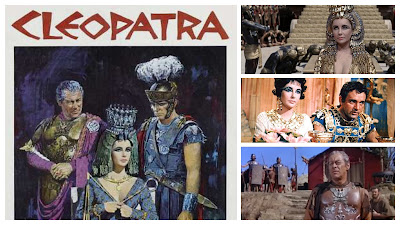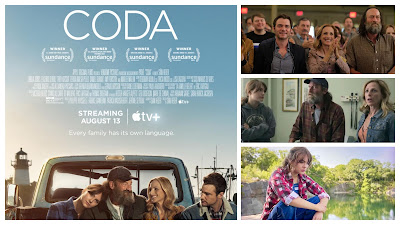Reel Speak’s Retro Reviews will randomly review a classic film every week, with the intention of introducing some overlooked and perhaps forgotten screen gems from the past to those of us who may be unfamiliar or unawares of their existence.
This week in history, in 30 BC, Cleopatra VII, Queen of Egypt, committed suicide. The famed historical figure has been the subject of several books, TV series, and films…with the most famous of all being Joseph L. Mankiewicz’s colossal epic from 1963.
Cleopatra (Elizabeth Taylor), manipulates Julius Caesar (Rex Harrison), and years later, Mark Antony (Richard Burton), in an attempt to save Egypt from the rule of Rome.
Directed by Joseph L. Mankiewicz and based on the book by Carlo Maria Franzero, CELOPATRA unfolds over the course of several years. The first half (before the intermission), focuses on Cleopatra and Caesar, with their budding relationship running parallel to their ambitions of rule. The second half, taking place after Caesar’s death and the birth of their son, deals with Cleopatra being pursued by Caesar’s old friend Marc Antony…who wants to build an army in Egypt to ward off a possible threat posed by Caesar’s nephew, Octavian (Roddy McDowall).
The threat of war and Egypt falling under the rule of the expanding Roman Empire hangs over Cleopatra and her kingdom, but the film keeps things intimate at all times; ever does it keep its scenes in the indoor bathhouses, throne rooms, and bedrooms. The films’ politics and battles of love-interests gives the film more drama than action, and with a running time of over four hours, it feels every bit of its epic label.
Up until 1993, CLEOPATRA was the most expensive film ever made, and every last cent can be seen on the screen. The sets are breathtaking with remarkable depth-of-field and scale, and every one of Elizabeth Taylor’s 65 costumes are stunning. The few battle scenes are staged in impressive ways even by today’s standards, and the quieter scenes keep moving with dialogue that is surprisingly witty and funny. The highlight of the film is Cleopatra’s spectacular entrance into Rome as she rides into the Roman Forum aboard a giant Sphinx surrounded by dancers.
Elizabeth Taylor is excellent as Cleopatra; showing strength and vulnerability and is gorgeous to look at. Rex Harrison and Richard Burton are also very good. Roddy McDowall is surprisingly good as a bad guy, and smaller roles are held down well by Martin Landau and Carroll O’Connor (!).
Anyone who knows their history (or read the first paragraph of this blog), knows how Cleopatra’s story will tragically end. The presentation of her end is done tastefully, and its impact can be felt as it is well-earned. CLEOPATRA is one of those films that can be put into the category of “they don’t make ‘em like that anymore”, with its massive sets, endless headcounts of extras, and preference of quiet drama over action. It’s an undertaking to watch, but this Queen deserves no less.
BOTTOM LINE: See it.
*
Reel Facts: CLEOPATRA would be nominated for nine Oscars, including Best Picture, and would win for Art Direction (color), Cinematography (color), Visual Effects, and Costume Design. The film’s production had several delays due to illnesses suffered by Elizabeth Taylor, with filming beginning in September 1960 and ending July 1962.








